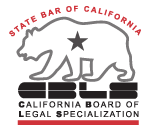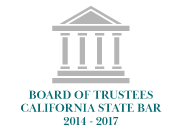As year-end approaches, California families with substantial assets face both an opportunity and a deadline: how to structure charitable contributions that align with their philanthropic goals while optimizing tax outcomes. For families managing significant portfolios, charitable giving extends far beyond writing checks—it requires integration with broader estate planning, understanding of state and federal tax implications, and deployment of vehicles designed for major contributions.
Beyond Cash: Appreciated Asset Donations
While cash gifts remain common, they often represent a missed opportunity for families with sizable investment portfolios. Donating appreciated securities—stocks, bonds, or mutual funds held longer than one year—provides dual benefits: you receive a charitable deduction for the full fair market value while avoiding capital gains tax on the appreciation.
Consider the mathematics: A California taxpayer in the highest brackets faces a combined federal and state capital gains rate approaching 40% when accounting for the 3.8% net investment income tax. For a stock purchased at $100,000 that has grown to $500,000, selling triggers approximately $160,000 in taxes. Donating the stock directly eliminates this tax while generating a $500,000 charitable deduction.
This approach works particularly well with concentrated stock positions where diversification is needed but tax consequences have created inertia. The charity receives the full value, you avoid the capital gains burden, and your portfolio rebalancing occurs tax-efficiently.
Qualified Small Business Stock: A Unique Opportunity
For families holding Qualified Small Business Stock (QSBS), charitable donations present a particularly valuable planning opportunity. While QSBS already offers significant tax advantages when sold, donating these shares to charity can complement other wealth transfer strategies.
California doesn’t recognize the QSBS federal exclusion, creating a state tax liability even when federal tax is eliminated. Charitable donation of QSBS sidesteps both federal and California taxation while supporting philanthropic goals. This works especially well when QSBS holdings exceed the exclusion limits or when diversification is needed.
For tech entrepreneurs and early employees who’ve accumulated substantial QSBS positions, integrating charitable giving with exit planning can create meaningful value beyond pure tax savings.
Donor-Advised Funds: Flexibility with Immediate Tax Benefits
Donor-advised funds (DAFs) have become increasingly popular among families with complex financial situations seeking both tax efficiency and philanthropic flexibility. These vehicles allow you to make a significant contribution in a high-income year, receive an immediate tax deduction, and then recommend grants to charities over time.
The appeal extends beyond tax timing. DAFs accept appreciated securities, avoiding capital gains while providing the full fair market value deduction. They allow families to “bunch” multiple years of charitable giving into one tax year, particularly valuable when itemized deductions might not exceed the standard deduction in lower-income years.
For California families, DAFs also simplify administration when supporting multiple charities. Rather than tracking donations to dozens of organizations, you maintain one account with consolidated tax reporting. The sponsoring organization handles due diligence on recipient charities, reducing administrative burden.
Investment growth within DAFs occurs tax-free, potentially increasing the total amount available for future charitable grants. This becomes particularly relevant for families establishing multi-generational philanthropic vehicles where children and grandchildren can participate in grant recommendations.
Charitable Remainder Trusts: Income, Deduction, and Estate Planning
Charitable remainder trusts (CRTs) serve families seeking income from appreciated assets while ultimately benefiting charity. These irrevocable trusts pay you (or other beneficiaries) income for a term of years or life, with the remainder passing to designated charities.
The immediate benefits include a partial charitable deduction based on the calculated present value of the charity’s remainder interest, elimination of capital gains tax on donated appreciated assets, and income generation from the trust’s investments. The estate planning benefits include removing assets from your taxable estate and creating a structured giving vehicle that reflects family values.
CRTs work particularly well for families holding highly appreciated property—real estate, business interests, or concentrated stock positions—where a sale would trigger substantial taxes but income is needed or desired. The trust sells the asset tax-free and reinvests for income production.
California families should note that while federal tax benefits apply immediately, state tax treatment may differ. Professional coordination between estate planning and tax advisors helps optimize the structure for combined federal and California implications.
Private Foundations: Control and Legacy
For families committed to substantial, ongoing philanthropy, private foundations offer unmatched control and visibility. Unlike donor-advised funds, foundations provide complete governance authority, public recognition, and the ability to employ family members in foundation management.
The trade-offs include administrative complexity, annual distribution requirements (generally 5% of assets), and excise taxes on investment income. Deduction limits are also more restrictive than with public charities—generally 30% of adjusted gross income for cash and 20% for appreciated property, versus 60% and 30% respectively, for public charities.
However, for families who view philanthropy as a multi-generational legacy-building endeavor, these limitations may be acceptable. Foundations create visible family identity around charitable values, provide structure for involving younger generations in philanthropy, and offer complete discretion over grant-making priorities and timing.
Year-End Timing Considerations
California’s tax landscape creates unique year-end planning considerations. State income tax rates reaching 13.3% make charitable deductions particularly valuable, but this benefit requires careful timing and documentation.
For appreciated securities, transfers must be completed—not just initiated—before December 31st. Different brokerages have varying processing timelines, with some requiring instructions days or even weeks before year-end. Starting this process in early December rather than late prevents missed deadlines.
Credit card donations process in the year charged, even if you don’t pay the bill until January. Checks are deductible in the year mailed, regardless of when the charity deposits them. Understanding these distinctions helps optimize timing when year-end approaches.
Documentation and Substantiation
Regardless of the vehicle used, proper documentation remains critical. For donations exceeding $250, you need a written acknowledgment from the charity, including the amount contributed and whether you received any goods or services in exchange. For non-cash donations over $5,000, qualified appraisals are required.
California families should maintain records demonstrating both federal and state deduction eligibility. While the federal rules govern the deduction, California’s treatment of certain contributions may differ, requiring separate substantiation for state purposes.
Integration with Comprehensive Estate Planning
Year-end charitable giving shouldn’t occur in isolation from broader estate planning goals. Charitable bequests in wills or trusts, beneficiary designations on retirement accounts, and life insurance gifts all connect with annual giving strategies to create cohesive philanthropic plans.
For families with appreciated assets, international holdings, or business interests, charitable planning requires coordination across multiple advisors. Tax professionals, estate planning attorneys, and financial advisors each contribute expertise necessary for optimal structuring.
Taking Action
As year-end approaches, California families managing substantial portfolios should review their charitable giving strategies within the context of overall financial and estate planning. Whether using appreciated securities, donor-advised funds, charitable trusts, or other vehicles, proper planning and timely execution can substantially enhance both philanthropic impact and tax efficiency.
For families considering major charitable contributions or seeking to integrate philanthropy into comprehensive estate plans, professional guidance helps navigate the complex interaction of federal tax law, California tax treatment, and estate planning goals.
Ready to Discuss Strategic Charitable Giving as Part of Your Estate Plan?
Schedule a 30-minute introductory meeting to discuss your philanthropic goals and explore how charitable planning might align with your estate planning objectives. We’ll review your situation, answer your questions, and help you understand if we’re the right fit for your needs. Call our Los Altos office at (650) 325-8276, or submit a message via our contact form: https://www.calprobate.com/contact-us/ to get started.








